2018 年於復活節假期,我們率領 41 位拔萃男書院師生前往哈薩克,深入舊城和民居,認識中亞的歷史文化。我們從最大城市阿拉木圖,走到新首都努爾蘇丹,感受哈國現代化進程。我們更與中國駐哈薩克大使張漢暉大使會面,探討一帶一路策略的實踐。旅程中的體驗、討論和分享都為同學帶來不少衝擊和反思。
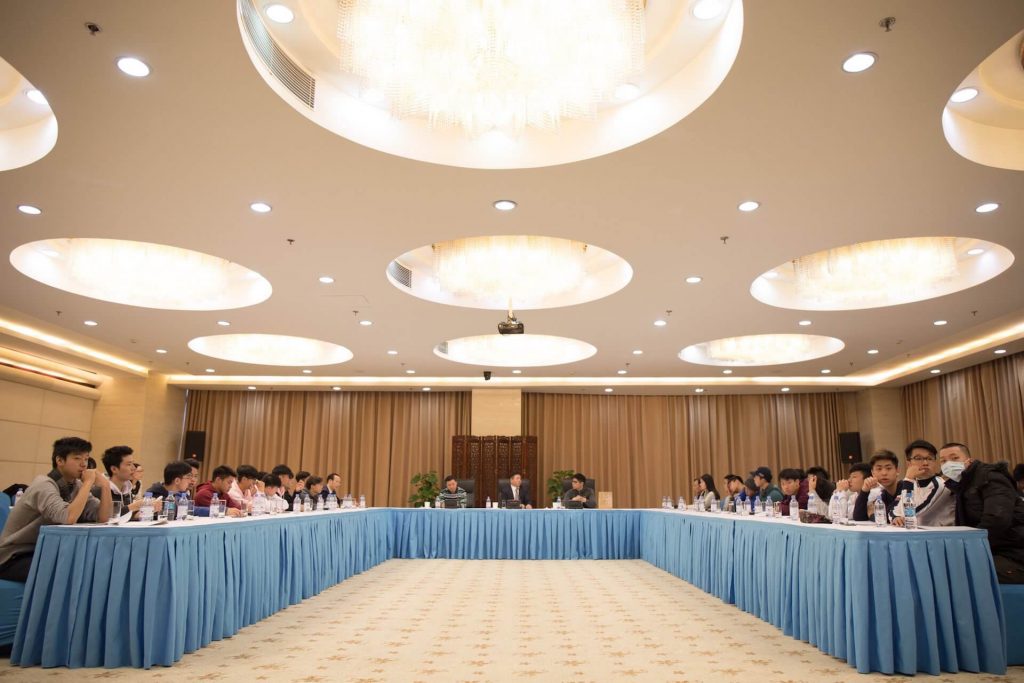
這次特別邀請到中國駐哈薩克大使張漢暉大使與我們會面。他不單跟同學分享了一帶一路在哈薩克實行的情況,也分析了哈薩克的政策和社會狀況,為同學帶來不一樣的角度和看法。同學們在會面後的分享中,紛紛表示會面的內容非常新鮮,角度與主流媒體分析的也非常不同,有助同學吸收多方面資訊,培養批判性思考。
除了政府官員,我們也特意邀請了兩個本地家庭共晉晚餐,一嘗家庭式口味,感受地道民生。席上,主人家以哈國奶茶招呼我們,適逢有同學帶了一盒即沖港式奶茶送給主人家,大家立即交流各地奶茶文化差異;也有同學送了雙筷子,介紹中華飲食文化,上演一幕幕「餐桌外交」。
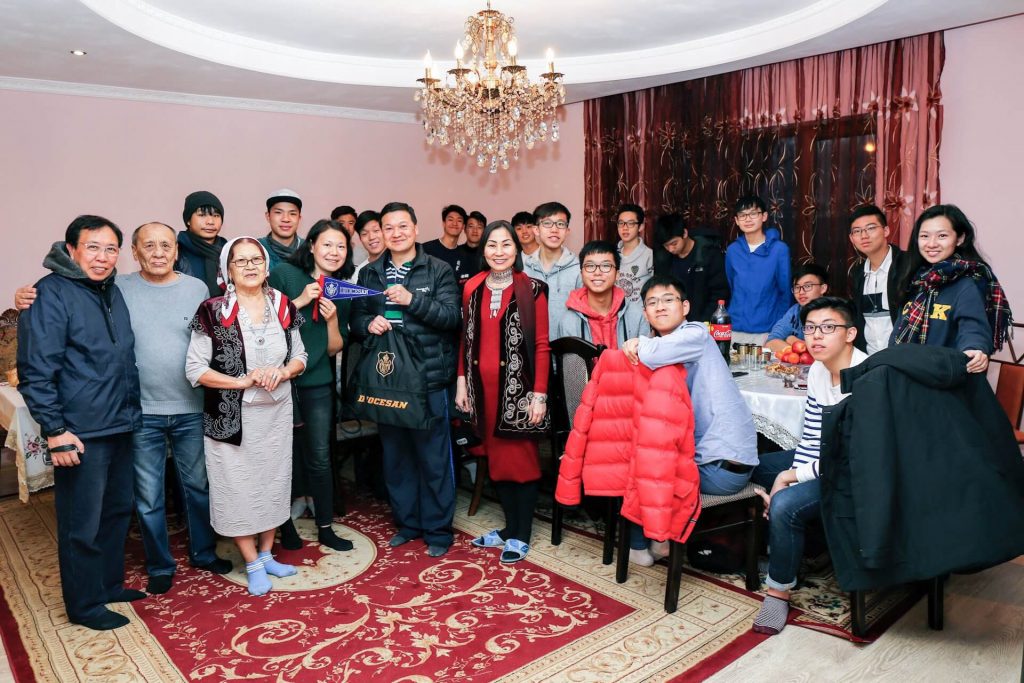
為了更了解中亞國家的教育發展,我們參觀了數間本地大家及中學,與當地同學交流,除了了解日常生活差異外,也深入討論對兩地社會和政治的看法,培養世界觀。
哈薩克的學生踴躍地向我們講解中亞遊牧文化,我們也邀請了同學向哈薩克學生介紹我們的文化和歷史。如何在短短的十分鐘內,向完全不認識我們的朋友介紹自身文化,非常有挑戰。而在挑選匯報內容的過程中,亦讓同學重新認識和定義甚麼是我們的文化。
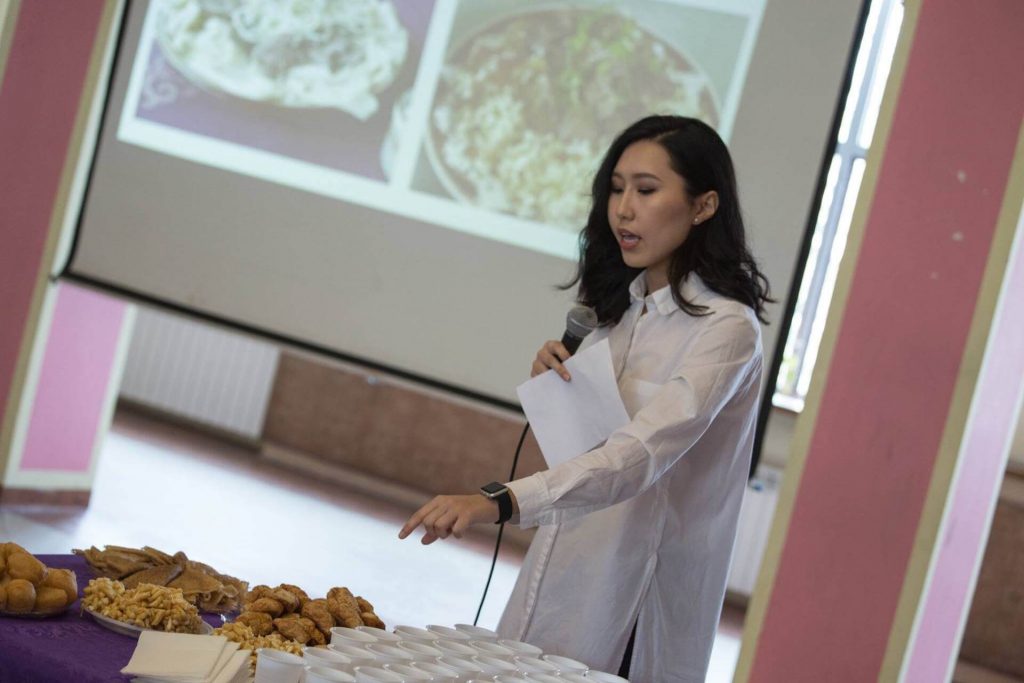
除了一同午膳,輕鬆地交流雙方文化外,我們更有機會和當地學生一起上課,感受別國的教育模式。
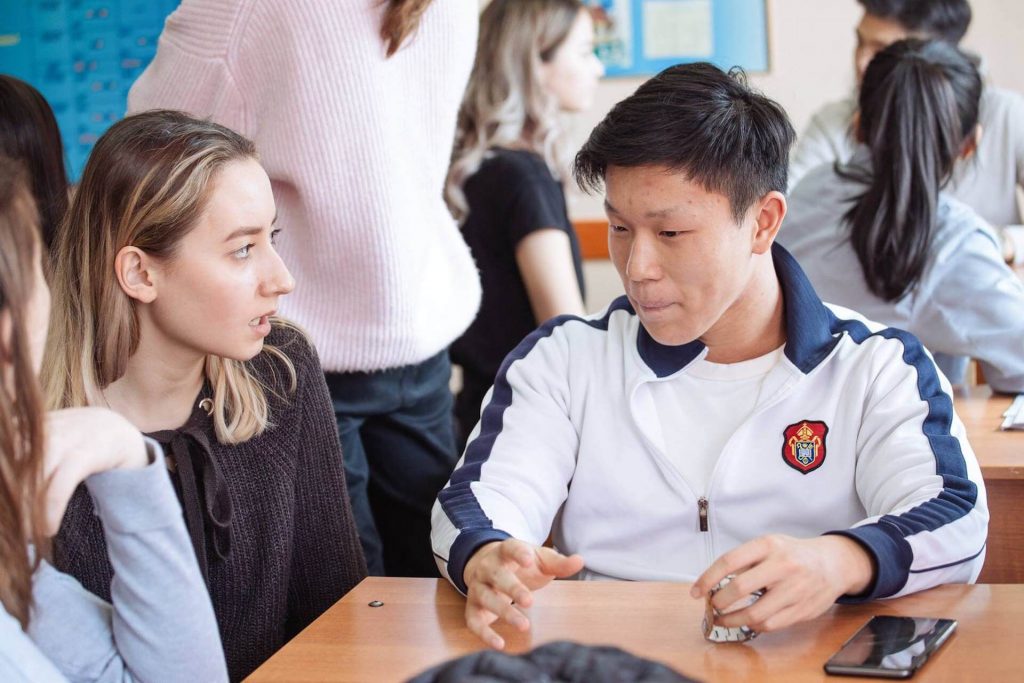
音樂是世界語言,一曲「海闊天空」亦連繫了兩位互不認識、原本天各一方的學生,感謝哈國同學特地為我們練習了一首廣東歌。

我們特別到訪兩市的中學,既與當地學生討論地道文化,也有機會參與課堂,感受不同的教育模式。國家重點發展努爾蘇丹新都,亦以首任總統名義創立多所學校,供國內最優秀的學生入讀。每個課室均配備智能電視,校園內更設有溫室,一應俱全,反觀阿拉木圖的學校就比較傳統老舊,可見兩市之發展差異。這也讓我們思考不少發展中國家均出現的難題,面對急速經濟發展,如何讓更多市民受惠,不致於把貧富差距越拉越開?
除了和當地人交流的寶貴時光,我們亦把握機會,到訪哈國不同地標,從城市面貌和建築認識國家的政經發展。
哈薩克新首都努爾蘇丹 (舊稱阿斯塔納) 建於國家中部荒野中,以便日後擴大發展。我們這次趕及在冬天的尾巴到訪阿斯塔納,走到位於新區的納扎爾巴耶夫大學,遠眺就是城市邊緣。一望無際的雪景,比其他旅遊熱點更來得震撼。而觀景台為哈薩克地標建築,亦是合照背景熱點。有指觀景台與很多努爾蘇丹的建築一樣,都是由第一任總統納扎爾巴耶夫設計,孰真孰假就不得而知了。雖然觀景台外形標奇立異,但其實象徵了哈國的神話故事,也為宣揚哈國的文化出了一分力。
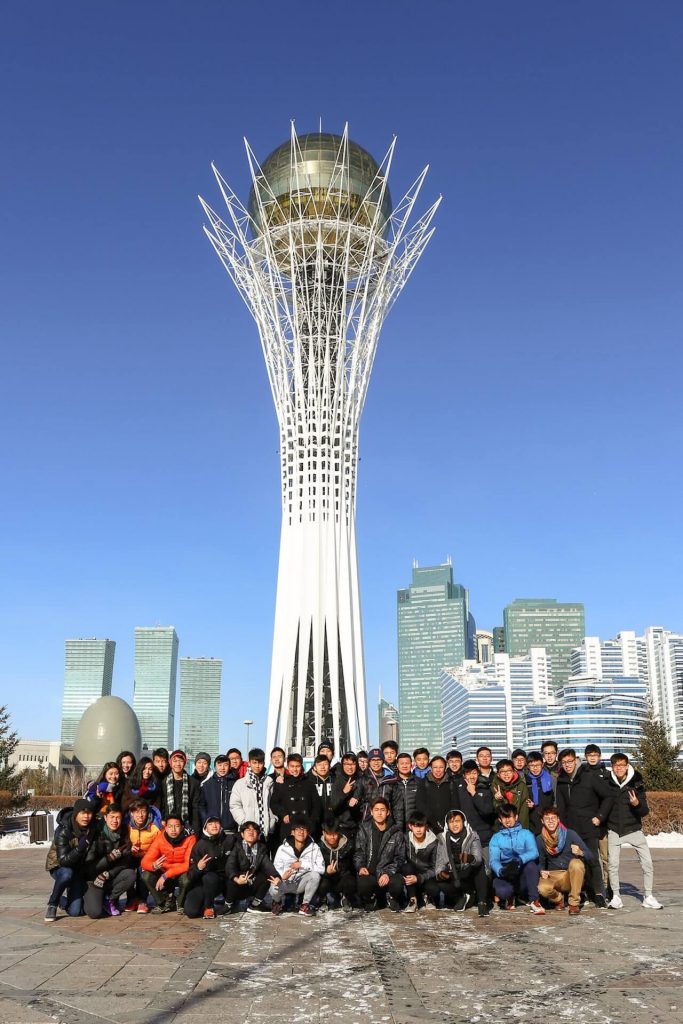
而哈薩克雖為世俗國家,卻有逾七成人口為穆斯林。但在穆斯林世界中,哈薩克的教規可算是非常寬鬆,對日常衣著沒有要求,只是進入清真寺時仍須衣著端莊,女士要遮蓋頭髮。我們身後的 Khazret Sultan Mosque 是全中亞最大的清真寺,寺內莊嚴神聖,也讓同學感受不同宗教的特色。
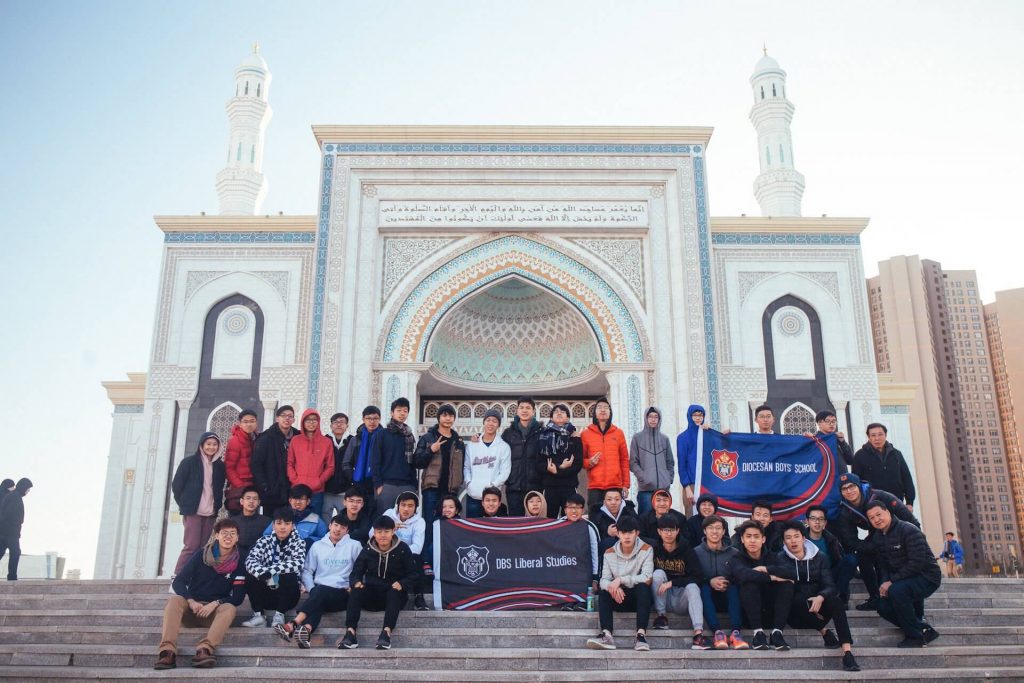
我們亦參觀了第一總統博物館,當時第一任總統納扎爾巴耶夫仍在位,但已經為自己建立了博物館。我們除了欣賞博物館中的特色展品外,也討論博物館本身代表的意識形態、中亞地區和前共產國家特有的個人崇拜,以及帶來的影響。
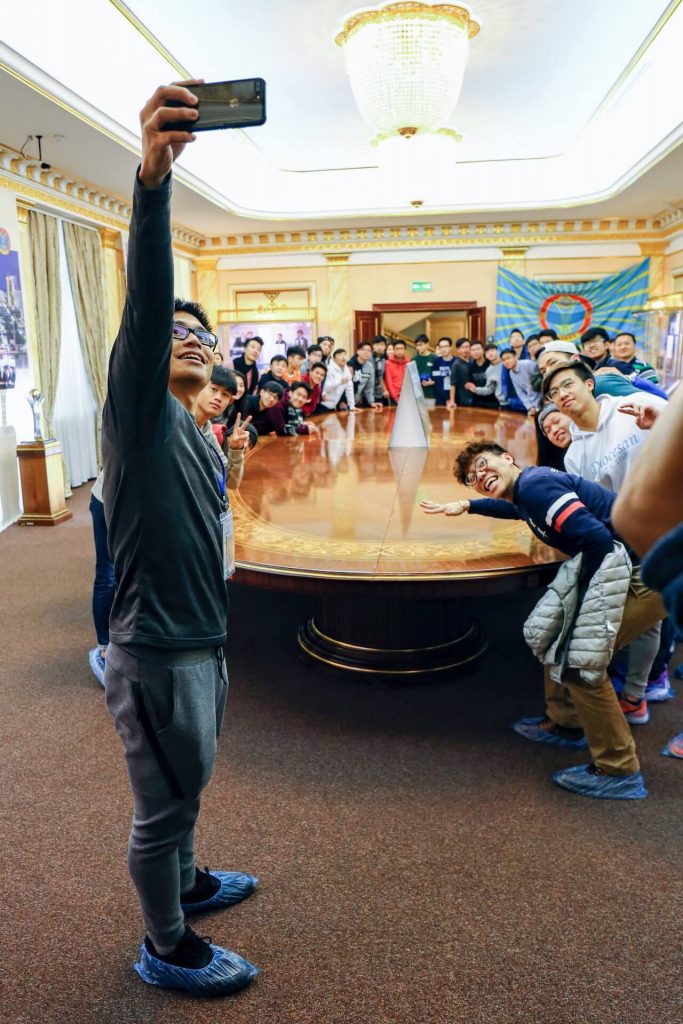
2017 年的世界博覽會正正在努爾蘇丹舉行,主題為未來能源。主場館於世博完結後,亦改建為未來能源博物館,除了讓參加者認識哈薩克作為石油大國,如何在世界轉向可再生能源的大潮流中轉型外,也了解世界博覽如何提升哈薩克的國際地位。

近年哈薩克逐步於國家獨立後站穩住腳,也受惠中國急速發展,香港的同學或多或少會認識到哈薩克毗鄰中國、是一帶一路重點發展國家云云。但除了一般在媒體上看到的表面風光,我們更希望讓同學深入了解國家的不同面貌,不單是發展帶來的經濟效益,也探討如何面對挑戰和不同社會問題。每個行程中也必定少不得與當地人聊聊天,或是指導同學設計問題、安排街頭訪問;或是走進民居、品嚐地道風味,從中認識國家變遷帶來的真實切身影響。
Recap of Kazakhstan Programme for Diocesan Boys’ School
During the Easter holiday, we have designed a programme to Kazakhstan for students and teachers from Diocesan Boys’ School to explore the unique Central Asian culture via visiting local families. We went from the largest city in the country, Almaty, to the new capital established since 1997, Nur-Sultan, to experience the modernisation and recent development of the country. We also met with the Chinese Ambassador Mr. Zhang Hanhui to discuss the execution of the Belt and Road Initiative in Kazakhstan. The experience throughout the trip allowed students to reflect what we have learnt about the country.
It was our pleasure to invite the Chinese Ambassador Mr. Zhang Hanhui to meet with us. He did not only share about the execution of the Belt and Road Initiative in Kazakhstan, but also his view about the policies and social situation in Kazakhstan, bringing a unique point of view to students. After the meeting, all the students found that the opinion was very original and different from what they have learnt from mainstream media. It helped students learn about more different aspects and cultivate the ability of critical thinking.
Besides meeting with officials, we have also invited two local families to enjoy dinners with us and let students try a taste of home cooks. Kazakh Milk Tea was served during the dinner. Accidentally, our student had brought some 3-in-1 instant milk tea as a gift. They immediately shared the difference of the ‘milk tea culture’. Some students brought chopsticks as gifts to introduce our dining culture.
To further investigate into the development of education in Central Asia, we have arranged meetings with several secondary schools and universities. Exchanging with local students, we did not only share about the lifestyle difference between two places, but also discuss the views to society and politics, building up global vision.
When the kazakh students introduced us the local culture and characteristics, we could easily find a trace of joy on their faces. It was probably the proudness to the country and their own culture. We have also invited our students to introduce about the history and culture of Hong Kong. It was challenging to introduce a brand new place to local students in just 10 minutes. The preparation of the presentation, choosing what to introduce about, provided a golden chance for students to redefine ‘what is our own culture’.
We then had a precious opportunity to attend the lessons together, experiencing a different style of teaching. Though with difficult language, music as an international language can always bond people. A Kazakh student practised the song ‘Boundless Oceans, Vast Skies’ by Beyond in Cantonese for us, magically linked two students from different places.
We especially arranged visits to schools in both cities. In Nur-Sultan, a city which the country focused to develop, numerous schools named after the first president were established for the most prestige students in the country. The campuses were well equipped with most advanced technology. The classrooms were all equipped with smart TVs. There was even a green house inside the campus. Comparatively, the schools in Almaty were more traditional. It showed the difference in levels of development in the country and also provided a great opportunity for us to discuss, how these developing countries cope with the challenges brought by the rapid economic development.
After meeting with the locals, we started to discover the socio-economic development of the country while exploring around the city.
The new capital Nur-Sultan (formerly known as Astana) was built in the steppe region in Central Kazakhstan. The area facilitates future expansion of the city. We visited Astana right before the end of winter. When we visited the Nazarbayev University in the new developed region in Astana, we could see the edge of the city close at hand. The snowscape beyond the edge stretched the horizon, which was as stunning as most tourists’ hot spots.
The most well-known landmark in Kazakhstan would probably be Bayterek tower, which is also a popular photo background. Local legend said that the tower was designed by Nazarbayev the President, as most of the special architecture in Bur-Sultan, yet the legend could not be verified. Although the tower might look bizarre, it actually symbolises a traditional folktale, helping to promote the Kazakhstan culture.
Although Kazakhstan is a Secular State, over 70% of the population are Muslims. The rules of Muslims in Kazakhstan are rather relaxed. For example, there isn’t any special rule imposing on daily outfits. Visitors only need to be careful while entering Mosques, which requires dressing modestly and ladies covering the hair. The Khazret Sultan Mosque is the largest mosque in Central Asia. The solemn and sacred atmosphere allows students to experience the characteristics of different religions.
In the Museum of the First President, we did not only appreciate the special exhibits, but also discussed the ideology represented by the Museum and the influence brought by Cult of Personality in Central Asia and communist states.
Museum of the Future Energy was the Kazakhstan National Pavilion in the Expo in the previous year. Students could study about the transformation of Kazakhstan, as an energy giant, under the global trend of shifting to renewable energy. Through the former Expo exhibition, we could learn about how the Expo helped the international status of Kazakhstan.
